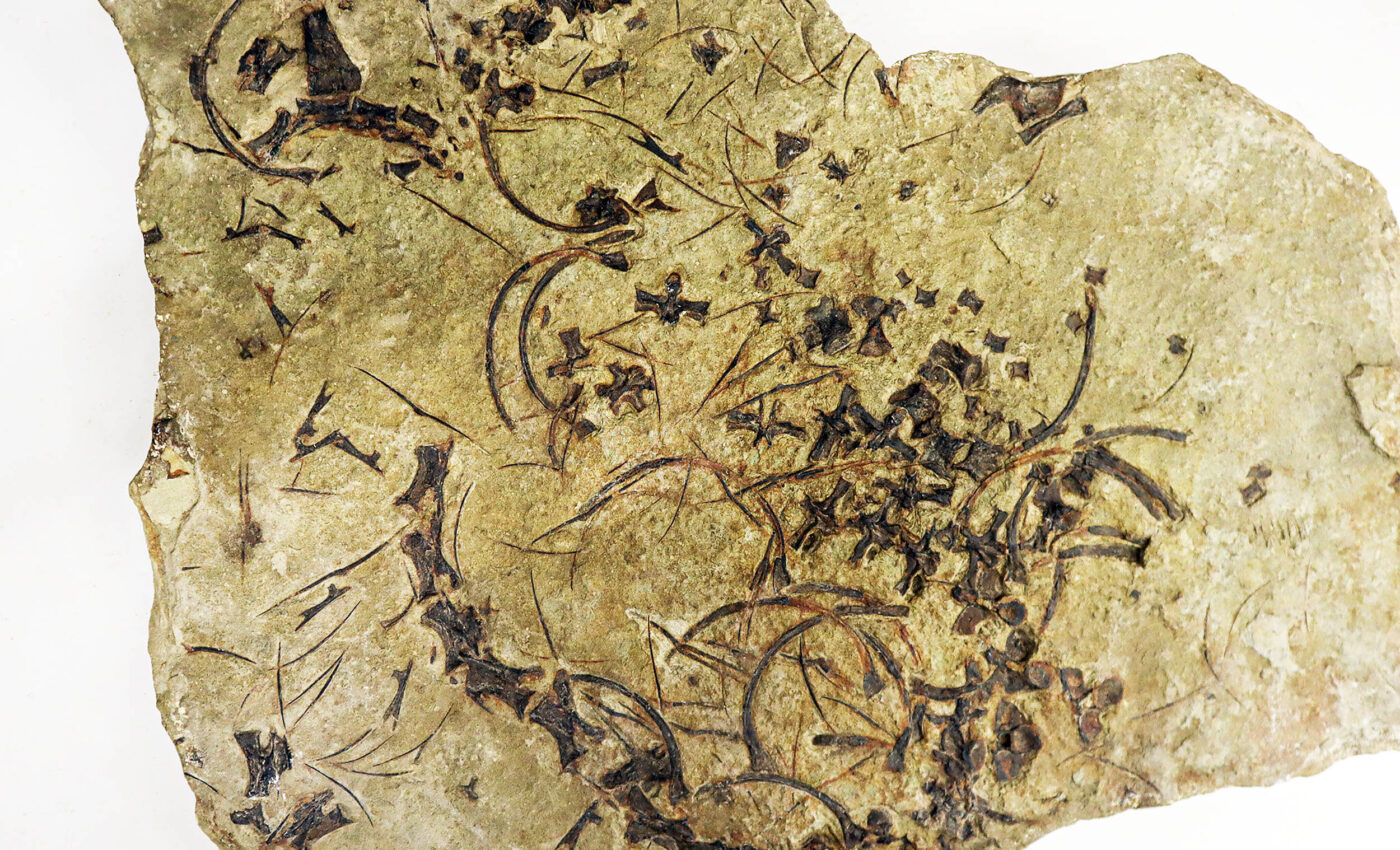
Trachelosaurus fischeri: World's oldest long-necked marine reptile rediscovered
A fossil discovered over a century ago has been confirmed as the oldest long-necked marine reptile. A team of international scientists re-examined the Trachelosaurus fischeri fossil, transforming our knowledge of Triassic marine life.
This discovery by State Museum of Natural History Stuttgart provides a thrilling new chapter in the ancient marine ecosystems.
Discovery of Trachelosaurus fischeri
The story of Trachelosaurus fischeri began in 19th century Germany, where its fossilized remains were discovered. However, its unusual anatomy caused confusion among scientists. For decades, the true identity of this perplexing creature remained shrouded in mystery.
“Through research on Chinese fossils of the long-necked marine reptile Dinocephalosaurus, which I published with colleagues just a few weeks ago, we were able to solve the mystery of Trachelosaurus fischeri. The anatomy shows us that it is closely related to Dinocephalosaurus,” explains Dr. Stephan Spiekman, an expert on this group of animals.
“Trachelosaurus fischeri is the first fossil of this reptile group to be found outside of China. It is also the oldest long-necked marine reptile known to date.”
Unique features of Trachelosaurus fischeri
The fossil offers a tantalizing glimpse into the evolutionary past. Following are the peculiar details of its anatomy.
Disjointed skeleton
The partially disarticulated skeleton of Trachelosaurus fischeri provides valuable clues. It includes skull fragments, a substantial section of the spine, parts of the tail vertebrae, a well-preserved rib cage, sections of the pelvis, a femur, and even a possible foot bone.
These elements, though fragmented, give researchers a strong foundation for comparison with other early archosauromorphs.
Elongated spine
Remarkably, Trachelosaurus fischeri boasts a long spine, with at least 21 neck vertebrae and 27 back vertebrae. This elongation is a hallmark of the tanysaurians. Furthermore, the ends of the spine’s neural arches widen distinctively, unlike anything seen in other Triassic archosauromorphs.
Unusual ribs
The creature’s neck ribs are equally bizarre with their short, forked design, never extending past the length of the vertebra they belong to. This is another unusual trait unseen in its close relatives.
Additional clues
The fossil’s right premaxilla reveals long, slightly curved teeth devoid of serrations – a feature resembling some tanystropheids and trachelosaurids.
Moving beyond the head, Trachelosaurus fischeri lacks a some parts of the pelvis, and its femur is surprisingly stout without a bend. Its barrel-shaped torso and rounded ribs show that this creature was built for life in the water.
Survival strategies
Scientists suspect its signature long neck was a crucial weapon in its hunting arsenal. With lightning-fast strikes, it likely ambushed unsuspecting prey.
Furthermore, the discovery of land-dwelling animal footprints near the Trachelosaurus fischeri fossil paints a dramatic scene. It’s possible the reptile ventured too close to the shore, or perhaps violent weather washed it ashore into shallow waters.
These footprints reveal the ever-changing nature of prehistoric coastlines, where the boundaries blurred between land and sea. The mix of marine and terrestrial creatures in the same rock layer suggests a thriving and diverse ecosystem.
The coastal waters were likely a bountiful hunting ground for Trachelosaurus fischeri. Yet, these same waters carried a deadly risk, as its fossilized remains tragically attest.
Why the Trachelosaurus fischeri fossil matters
The discovery of Trachelosaurus fischeri reveals the astonishing resilience of life. After the devastating Permian-Triassic extinction event 252 million years ago, Earth’s biodiversity took a massive hit.
Yet, remarkably, life bounced back. Unique creatures like long-necked reptiles evolved and thrived in the transformed marine world.
The story of Trachelosaurus fischeri is about more than just this single fossil. It reminds us that museum collections hold vast, untapped potential. Old specimens, sometimes overlooked, can unveil incredible secrets when studied with new perspectives and advanced techniques.
This fossil’s century-long journey, from discovery to re-examination, highlights how museums and universities continue to unlock the mysteries of our planet’s past.
The study is published in the Swiss Journal of Palaeontology.
—–
Like what you read? Subscribe to our newsletter for engaging articles, exclusive content, and the latest updates.
Check us out on EarthSnap, a free app brought to you by Eric Ralls and Earth.com.
—–













